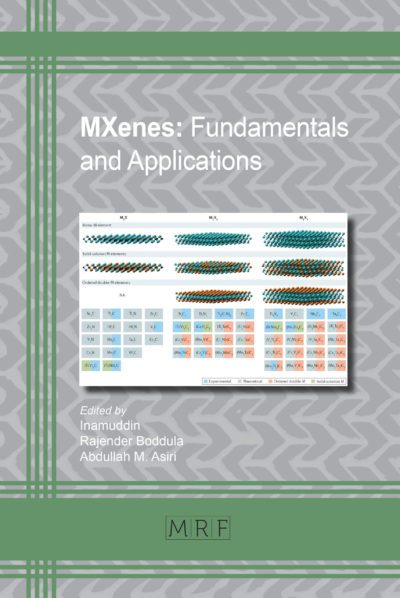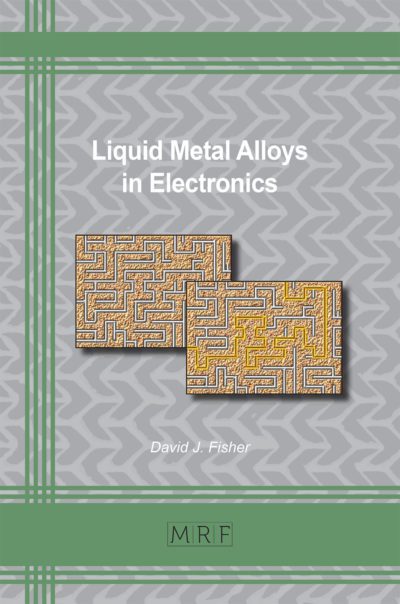Structural Health Monitoring of Infrastructures Using Sensors as Smart Materials– Review and Perspective
A. Dinesh, A. Karthick, S. Ramkumar
download PDFAbstract. Smart materials with sensors can monitor the structure’s performance under external loading circumstances. They may also monitor internal deformations or damages caused by environmental factors such as temperature, humidity, etc. As a result, the sensors are linked to structural health monitoring to create automated systems for structural monitoring, inspection, and damage identification. The formulation of this review article was prompted by a growing interest in structural health monitoring and the need to ensure structure safety to detect problems early and avert collapse. The structure, measurement methods, and potential of sensors such as fiber optic, piezoelectric, corrosion, ceramic, and self-sensing cement composite utilized in the health monitoring of concrete structures are discussed in this review paper. This review also includes a brief and comparative analysis of various sensors, as well as the optimal number and location of sensors. The study exposed that choosing a suitable sensor is critical for accurate sensing and long-term structure monitoring. The sensor can detect physical (stress, strain) and chemical (corrosion) variables that affect the structure’s endurance. Despite significant advances in damage monitoring approaches utilizing sensors, the study suggests that efficient sensor deployment remains problematic. The review revealed that the type of parameter to be monitored (stress, strain, humidity, etc.) and the structural and climatic conditions in which the sensor will be used determine the sensor’s selection. As a result, a self-sensing cement composite based on carbon nanofiber (CNF) has been developed, which has good durability and compatibility with concrete structures. However, increasing the amount of CNF lowers the composite’s compressive and flexural strength due to particle agglomeration. As a result, the review covers several sensors used in structural health monitoring with their measurements, applications, benefits, and limitations.
Keywords
Structural Health Monitoring, Sensors, Self-Sensing, Cement Composite, Strain, Corrosion
Published online , 14 pages
Copyright © 2022 by the author(s)
Published under license by Materials Research Forum LLC., Millersville PA, USA
Citation: A. Dinesh, A. Karthick, S. Ramkumar, Structural Health Monitoring of Infrastructures Using Sensors as Smart Materials– Review and Perspective, Materials Research Proceedings, Vol. 23, pp 255-268, 2022
DOI: https://doi.org/10.21741/9781644901953-29
The article was published as article 29 of the book Sustainable Materials and Smart Practices
![]() Content from this work may be used under the terms of the Creative Commons Attribution 3.0 licence. Any further distribution of this work must maintain attribution to the author(s) and the title of the work, journal citation and DOI.
Content from this work may be used under the terms of the Creative Commons Attribution 3.0 licence. Any further distribution of this work must maintain attribution to the author(s) and the title of the work, journal citation and DOI.
References
[1] R. Capozucca, Damage to reinforced concrete due to reinforcement corrosion, Constr. Build. Mater. 9 (1995) 295–303. https://doi.org/10.1016/0950-0618(95)00033-C.
[2] K. Kovler, V. Chernov, Types of damage in concrete structures, Woodhead Publishing Limited, 2009. https://doi.org/10.1533/9781845697037.1.32.
[3] A. Professor, Analytical study on the behaviour of cold formed steel double channel beam sections, n.d. www.ripublication.com/ijaer.htm.
[4] A. Dinesh, R. Prasanth Kumar, S.R. Abijith, Experimental investigation on bubble deck concrete using plastic waste, 2020. https://doi.org/10.1007/978-981-15-0990-2_14.
[5] P. Eswaramoorthi, P. Magudeaswaran, A. Dinesh, PUSHOVER ANALYSIS OF STEEL FRAME, n.d.
[6] A. Professor, Study on Strength properties of High performance concrete, n.d. www.ripublication.com/ijaer.htm.
[7] K. Sathish Raja, Dinesh. A, Study on Self Compacting Concrete – A Review, Int. J. Eng. Res. V5 (2016). https://doi.org/10.17577/ijertv5is020349.
[8] A. Professor, Stabilization of soil by using solid waste-A Review, © 2017 IJEDR |. 5 (2017). www.ijedr.org.
[9] A. Dinesh, S. Harini, J.P. Jasmine, J. Jincy, J. Shagufta, International journal of engineering sciences & research technology experimental study of blast furnace slag concrete, Int. J. Eng. Sci. Res. Technol. 6 (2017) 42–50. https://doi.org/10.5281/zenodo.345692.
[10] D. Sellakutty, A. Professor, UTILISATION OF WASTE PLASTIC IN MANUFACTURING OF BRICKS AND PAVER BLOCKS, 2016. https://www.researchgate.net/publication/303273892.
[11] A. Dinesh, S. Indhumathi, Moorthi Pichumani, Performance assessemnt of copper slag and sawdust ash in stabilization of black cotton soil, 2021.https://doi.org/10.1007/978-981-33-4590-4_21.
[12] A. Dinesh, B. Abirami, G. Moulica, Materials Today : Proceedings Carbon nanofiber embedded cement composites : Properties and promises as sensor – A review, Mater. Today Proc. (2020). https://doi.org/10.1016/j.matpr.2020.10.526.
[13] A. Dinesh, S.T. Sudharsan, S. Haribala, Self-sensing cement-based sensor with carbon nanotube: Fabrication and properties – A review, Mater. Today Proc. (2021). https://doi.org/10.1016/j.matpr.2021.02.722.
[14] S. Wen, D.D.L. Chung, Strain-Sensing Characteristics of Carbon Fiber-Reinforced Cement, (2006) 2006.
[15] W. Wang, S. Wu, H. Dai, Fatigue behavior and life prediction of carbon fiber reinforced concrete under cyclic flexural loading, Mater. Sci. Eng. A. 434 (2006) 347–351. https://doi.org/10.1016/j.msea.2006.07.080.
[16] A.O. Monteiro, P.B. Cachim, P.M.F.J. Costa, Electrical Properties of Cement-based Composites Containing Carbon Black Particles, Mater. Today Proc. 2 (2015) 193–199. https://doi.org/10.1016/j.matpr.2015.04.021.
[17] Y. Ding, G. Liu, A. Hussain, F. Pacheco-Torgal, Y. Zhang, Effect of steel fiber and carbon black on the self-sensing ability of concrete cracks under bending, Constr. Build. Mater. 207 (2019) 630–639. https://doi.org/10.1016/j.conbuildmat.2019.02.160.
[18] M. Aboubakar, Y. Sato, K. Niitani, Experimental investigation of monotonic behavior and stress-strain models of AE and non-AE high strength concrete with BFS fine aggregates under freezing and thawing, Constr. Build. Mater. 249 (2020) 118679. https://doi.org/10.1016/j.conbuildmat.2020.118679.
[19] J. Zhu, J. Chen, T. Chan, Analytical model for circular high strength concrete filled steel tubes under compression, Eng. Struct. 244 (2021) 112720. https://doi.org/10.1016/j.engstruct.2021.112720.
[20] P.C. Chang, A. Flatau, S.C. Liu, Review paper: Health monitoring of civil infrastructure, Struct. Heal. Monit. 2 (2003) 257–267. https://doi.org/10.1177/1475921703036169.
[21] J. Paek, K. Chintalapudi, R. Govindan, J. Caffrey, S. Masri, A wireless sensor network for structural health monitoring: Performance and experience, Second IEEE Work. Embed. Networked Sensors, EmNetS-II. 2005 (2005) 1–10. https://doi.org/10.1109/EMNETS.2005.1469093.
[22] K. Chilamkuri, V. Kone, Monitoring of varadhi road bridge using accelerometer sensor, Mater. Today Proc. 33 (2020) 367–371. https://doi.org/10.1016/j.matpr.2020.04.159.
[23] N. Beheshtizadeh, A. Mostafapour, S. Davoodi, Three point bending test of glass/epoxy composite health monitoring by acoustic emission, Alexandria Eng. J. 58 (2019) 567–578. https://doi.org/10.1016/j.aej.2019.03.006.
[24] V. Agarwal, A. Shelke, B.S. Ahluwalia, F. Melandsø, T. Kundu, A. Habib, Damage localization in piezo-ceramic using ultrasonic waves excited by dual point contact excitation and detection scheme, Ultrasonics. 108 (2020) 106113. https://doi.org/10.1016/j.ultras.2020.106113.
[25] L. Xie, X. Zhu, Z. Liu, X. Liu, T. Wang, J. Xing, A rebar corrosion sensor embedded in concrete based on surface acoustic wave, Meas. J. Int. Meas. Confed. 165 (2020) 108118. https://doi.org/10.1016/j.measurement.2020.108118.
[26] G.T. Parthiban, T. Parthiban, R. Ravi, V. Saraswathy, N. Palaniswamy, V. Sivan, Cathodic protection of steel in concrete using magnesium alloy anode, Corros. Sci. 50 (2008) 3329–3335. https://doi.org/10.1016/j.corsci.2008.08.040.
[27] A. Barrias, J.R. Casas, S. Villalba, Fatigue performance of distributed optical fiber sensors in reinforced concrete elements, Constr. Build. Mater. 218 (2019) 214–223. https://doi.org/10.1016/j.conbuildmat.2019.05.072.
[28] S. Abouali, M. Shahverdi, M. Ghassemieh, M. Motavalli, Nonlinear simulation of reinforced concrete beams retrofitted by near-surface mounted iron-based shape memory alloys, Eng. Struct. 187 (2019) 133–148. https://doi.org/10.1016/j.engstruct.2019.02.060.
[29] S.Z. Chen, G. Wu, D.C. Feng, Damage detection of highway bridges based on long-gauge strain response under stochastic traffic flow, Mech. Syst. Signal Process. 127 (2019) 551–572. https://doi.org/10.1016/j.ymssp.2019.03.022.
[30] K.T. Lau, C.C. Chan, L.M. Zhou, W. Jin, Strain monitoring in composite-strengthened concrete structures using optical fibre sensors, Compos. Part B Eng. 32 (2001) 33–45. https://doi.org/10.1016/S1359-8368(00)00044-5.
[31] S. Mahjoubi, R. Barhemat, Y. Bao, Optimal placement of triaxial accelerometers using hypotrochoid spiral optimization algorithm for automated monitoring of high-rise buildings, Autom. Constr. 118 (2020) 103273. https://doi.org/10.1016/j.autcon.2020.103273.
[32] A.S.E. Belaidi, B. Benabed, H. Soualhi, Physical and mechanical properties of concrete repair materials in dry and hot-dry environment, J. Adhes. Sci. Technol. 29 (2015) 543–554. https://doi.org/10.1080/01694243.2014.998001.
[33] Z. Herrasti, I. Gabilondo, J. Berganzo, I. Val, F. Martínez, Wireless Sensor Nodes for Acceleration, Strain and Temperature Measurements, Procedia Eng. 168 (2016) 1659–1662. https://doi.org/10.1016/j.proeng.2016.11.484.
[34] M.S. Konsta-Gdoutos, C.A. Aza, Self sensing carbon nanotube (CNT) and nanofiber (CNF) cementitious composites for real time damage assessment in smart structures, Cem. Concr. Compos. 53 (2014) 162–169. https://doi.org/10.1016/j.cemconcomp.2014.07.003.
[35] C. Maraveas, T. Bartzanas, Sensors for structural health monitoring of agricultural structures, Sensors (Switzerland). 21 (2021) 1–32. https://doi.org/10.3390/s21010314.
[36] S. Taheri, A review on five key sensors for monitoring of concrete structures, Constr. Build. Mater. 204 (2019) 492–509. https://doi.org/10.1016/j.conbuildmat.2019.01.172.
[37] F. Köksal, F. Altun, I. Yiǧit, Y. Şahin, Combined effect of silica fume and steel fiber on the mechanical properties of high strength concretes, Constr. Build. Mater. 22 (2008) 1874–1880. https://doi.org/10.1016/j.conbuildmat.2007.04.017.
[38] S.H. Liu, M.Q. Wu, M.J. Rao, L.H. Li, H.L. Xiao, Preparation, Properties, and Microstructure of Graphite Powder-Containing Conductive Concrete, Strength Mater. 51 (2019) 76–84. https://doi.org/10.1007/s11223-019-00052-1.
[39] X. Dongyu, C. Xin, H. Shifeng, Investigation of inorganic fillers on properties of 2-2 connectivity cement/polymer based piezoelectric composites, Constr. Build. Mater. 94 (2015) 678–683. https://doi.org/10.1016/j.conbuildmat.2015.07.090.
[40] H. Liu, K. Liu, Z. Lan, D. Zhang, Mechanical and Electrical Characteristics of Graphite Tailing Concrete, Adv. Mater. Sci. Eng. 2018 (2018). https://doi.org/10.1155/2018/9297628.
[41] H. Siad, M. Lachemi, M. Sahmaran, H.A. Mesbah, K.A. Hossain, Advanced engineered cementitious composites with combined self-sensing and self-healing functionalities, Constr. Build. Mater. 176 (2018) 313–322. https://doi.org/10.1016/j.conbuildmat.2018.05.026.
[42] L. Gao, T.W. Chou, E.T. Thostenson, Z. Zhang, A comparative study of damage sensing in fiber composites using uniformly and non-uniformly dispersed carbon nanotubes, Carbon N. Y. 48 (2010) 3788–3794. https://doi.org/10.1016/j.carbon.2010.06.041.
[43] X. Fan, D. Fang, M. Sun, Z. Li, Piezoresistivity of carbon fiber graphite cement-based composites with CCCW, J. Wuhan Univ. Technol. Mater. Sci. Ed. 26 (2011) 339–343. https://doi.org/10.1007/s11595-011-0226-0.
[44] Y. Fang, L.Y. Li, S.H. Jang, Calculation of electrical conductivity of self-sensing carbon nanotube composites, Compos. Part B Eng. 199 (2020) 108314. https://doi.org/10.1016/j.compositesb.2020.108314.
[45] Y. Kuronuma, T. Takeda, Y. Shindo, F. Narita, Z. Wei, Electrical resistance-based strain sensing in carbon nanotube/polymer composites under tension: Analytical modeling and experiments, Compos. Sci. Technol. 72 (2012) 1678–1682. https://doi.org/10.1016/j.compscitech.2012.07.001.
[46] X.F. Sánchez-Romate, J. Artigas, A. Jiménez-Suárez, M. Sánchez, A. Güemes, A. Ureña, Critical parameters of carbon nanotube reinforced composites for structural health monitoring applications: Empirical results versus theoretical predictions, Compos. Sci. Technol. 171 (2019) 44–53. https://doi.org/10.1016/j.compscitech.2018.12.010.
[47] X. Xin, M. Liang, Z. Yao, L. Su, J. Zhang, P. Li, C. Sun, H. Jiang, Self-sensing behavior and mechanical properties of carbon nanotubes/epoxy resin composite for asphalt pavement strain monitoring, Constr. Build. Mater. 257 (2020) 119404. https://doi.org/10.1016/j.conbuildmat.2020.119404.
[48] A. Naqi, N. Abbas, N. Zahra, A. Hussain, S.Q. Shabbir, Effect of multi-walled carbon nanotubes (MWCNTs) on the strength development of cementitious materials, J. Mater. Res. Technol. 8 (2019) 1203–1211. https://doi.org/10.1016/j.jmrt.2018.09.006.
[49] T. Yin, J. Xu, Y. Wang, L. Liu, Increasing self-sensing capability of carbon nanotubes cement-based materials by simultaneous addition of Ni nanofibers with low content, Constr. Build. Mater. 254 (2020) 119306. https://doi.org/10.1016/j.conbuildmat.2020.119306.
[50] X.F. Sánchez-Romate, J. Martín, A. Jiménez-Suárez, S.G. Prolongo, A. Ureña, Mechanical and strain sensing properties of carbon nanotube reinforced epoxy/poly(caprolactone) blends, Polymer (Guildf). 190 (2020). https://doi.org/10.1016/j.polymer.2020.122236.
[51] Alamusi, N. Hu, H. Fukunaga, S. Atobe, Y. Liu, J. Li, Piezoresistive strain sensors made from carbon nanotubes based polymer nanocomposites, Sensors. 11 (2011) 10691–10723. https://doi.org/10.3390/s111110691.
[52] B. Han, L. Zhang, S. Sun, X. Yu, X. Dong, T. Wu, J. Ou, Electrostatic self-assembled carbon nanotube/nano carbon black composite fillers reinforced cement-based materials with multifunctionality, Compos. Part A Appl. Sci. Manuf. 79 (2015) 103–115. https://doi.org/10.1016/j.compositesa.2015.09.016.
[53] J.M. Park, P.G. Kim, J.H. Jang, Z. Wang, J.W. Kim, W. Il Lee, J.G. Park, K. Lawrence DeVries, Self-sensing and dispersive evaluation of single carbon fiber/carbon nanotube (CNT)-epoxy composites using electro-micromechanical technique and nondestructive acoustic emission, Compos. Part B Eng. 39 (2008) 1170–1182. https://doi.org/10.1016/j.compositesb.2008.03.004.
[54] S. Biswal, A. Ramaswamy, Measurement of existing prestressing force in concrete structures through an embedded vibrating beam strain gauge, Meas. J. Int. Meas. Confed. 83 (2016) 10–19. https://doi.org/10.1016/j.measurement.2016.01.031.
[55] A.M. Bazán, J.C. Gálvez, E. Reyes, D. Galé-Lamuela, Study of the rust penetration and circumferential stresses in reinforced concrete at early stages of an accelerated corrosion test by means of combined SEM, EDS and strain gauges, Constr. Build. Mater. 184 (2018) 655–667. https://doi.org/10.1016/j.conbuildmat.2018.06.195.














